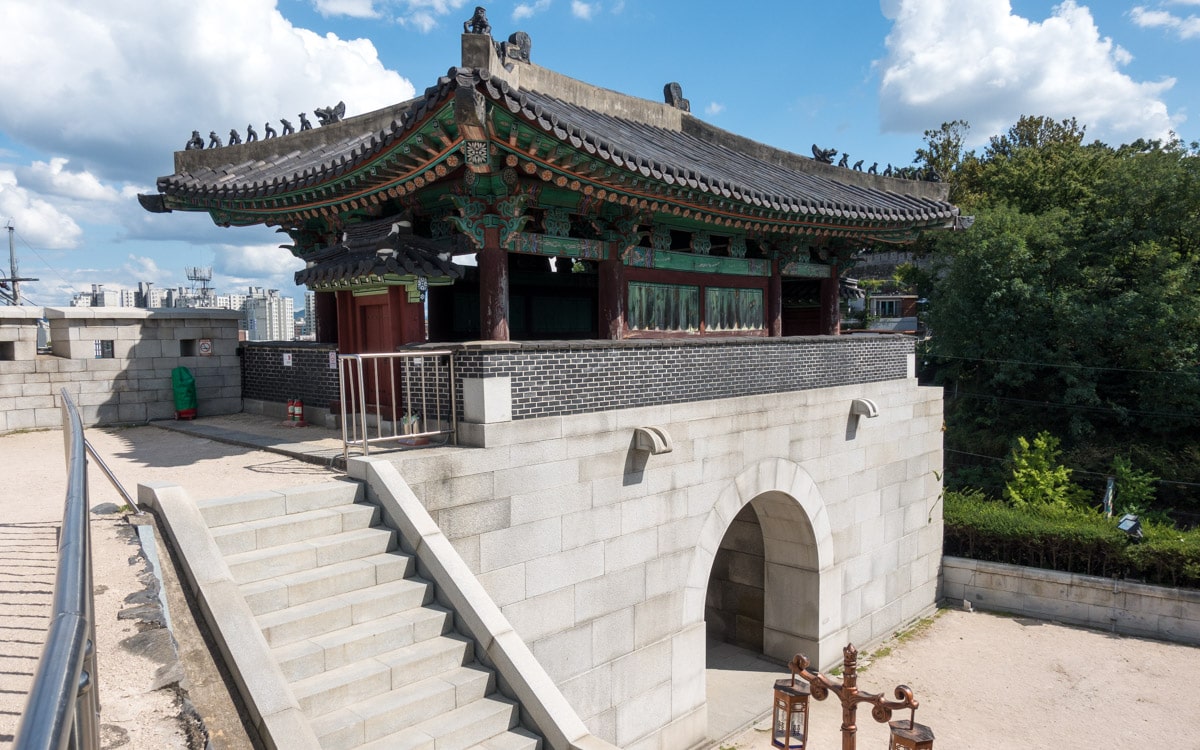
Hyehwamun Gate (Honghwamun Gate) is one four small gates found on the Fortress Wall that surrounds the city of Seoul. Hyehwamun literally means “Distribution of Wisdom Gate.” When originally built during the reign of King Taejo in 1396, it was known as Honghwamun.
In 1511, it was renamed to Hyehwamun because of a naming conflict with a similarly named gate built in 1483 at Changgyeonggung Palace. It is also known as Dongsomun, meaning “East Small Gate.”
Hyehwamun was regularly used by people needing to access the northern areas of the country. It was also important to these people because the nearby Sukjeongmun, was often closed.
In 1684 or 1744, a wooden gatehouse was constructed. It stood until 1928 when it was removed leaving just a stone archway similar to what is seen today.
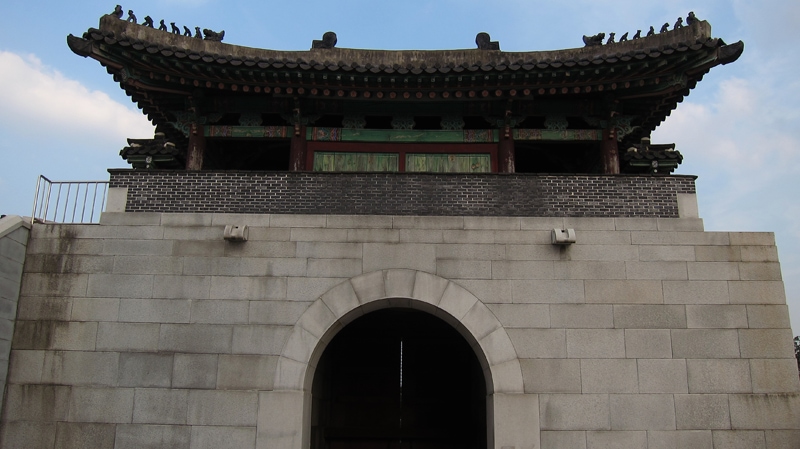
During the Japanese occupation of Korea, Hyehwamun was completely removed and to make way for street car line.
In 1992, the gate was rebuilt slightly north of its original location.
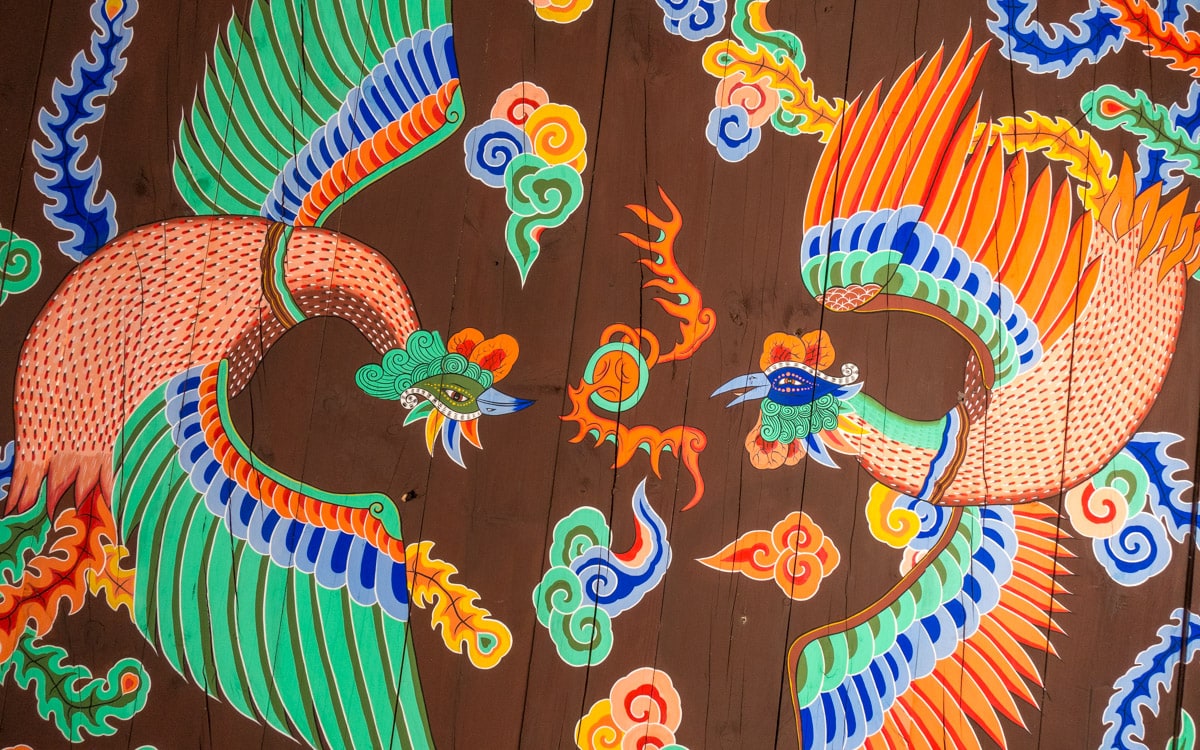
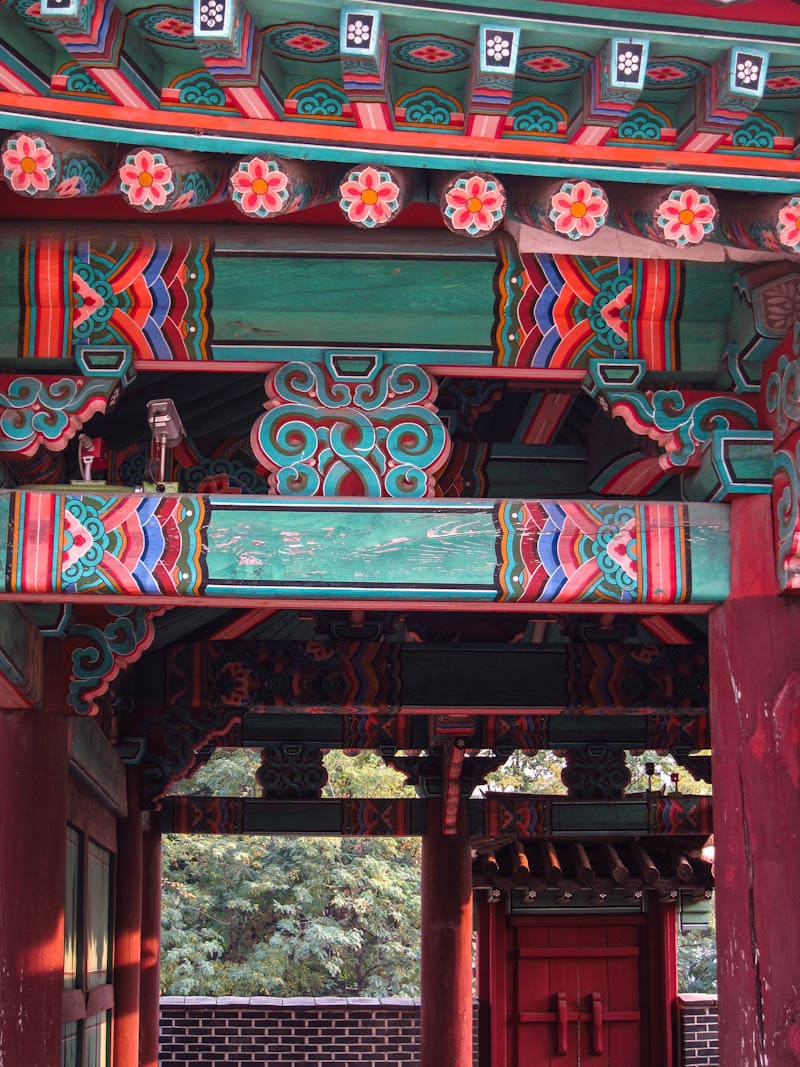
Hyehwamun Gate (Honghwamun Gate) Information
Hours
Monday-Sunday: 9:00-18:00Admission
Free
How to Get Here
Option 1
Take Subway Line 4 to Hansung University Station (Exit 5).
When exiting, make a U turn and follow the sidewalk for 3 minutes.
Access is available by staircase on the right.
Option 2
Take Subway Line 4 to Hyehwa Station (Exit 1).
After exiting, continue walking until you reach a roundabout.
Cross the street and turn right.
Continue for 3 minutes.
Access is available by staircase on the left.
Hyehwamun Gate (Honghwamun Gate) Video
Map
Additional Resources
Viator by TripAdvisor
Viator is a popular online platform that helps travelers book tours, activities, and unique experiences worldwide, including in Seoul. It connects users with a wide selection of options – from sightseeing tours to cultural events and outdoor adventures – all offered by local providers.
Klook
Klook offers discounted tickets and reservations for various attractions and services in Seoul, from theme parks and museums to tours and transportation options.
Rakuten
Save money while exploring Seoul with Rakuten's cashback program. Book your hotels or other services through Rakuten and enjoy cashback rewards and exclusive deals.
If you sign up using the link below, you could earn $30 cashback on your first purchase over $30.
Book Recommendations
For an immersive guide to Seoul, many travelers choose to bring a book along. Fodor's Seoul, for example, offers detailed recommendations on sights, restaurants, maps, and travel tips.
Nearby Sights
Daehangno Philippine Market
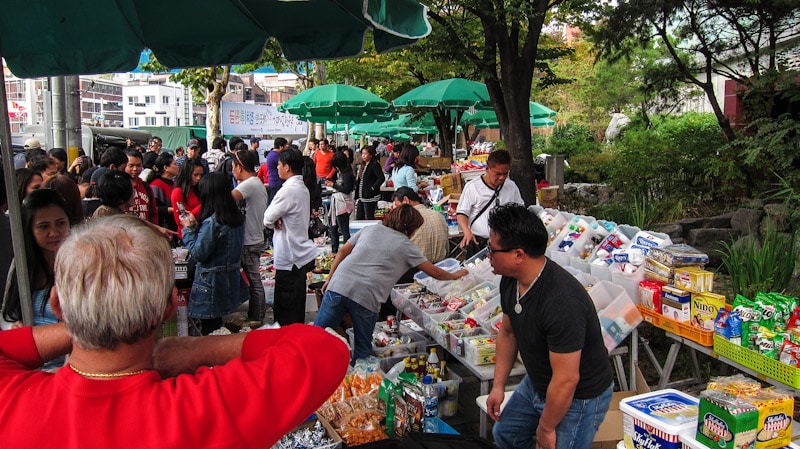
Daehangno Philippine Market is a unique Sunday street market in Hyehwa-dong that sells groceries, food, snacks, and other products from the Philippines. If you are looking for hard to find products of the Philippines, then this is your one stop spot in all of Seoul. There is nothing else like it in the city.
Daehangno (College Street)
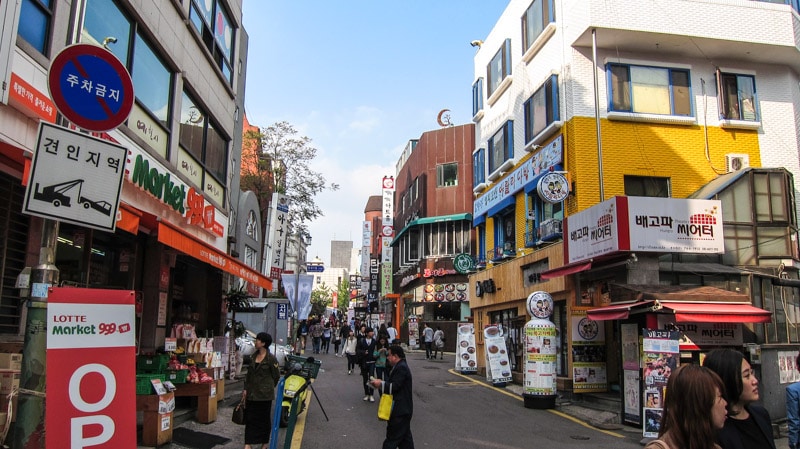
Daehangno, also known as College or University Street, is a popular youth culture area that is lined with small theaters. Seoul National University was once located here. This lively and youthful area is a great place to catch a show, have a nice dinner, or just wander around. Prior to 1985, this area was known as Sunggyobang, meaning "high respect for teaching."
Marronnier Park
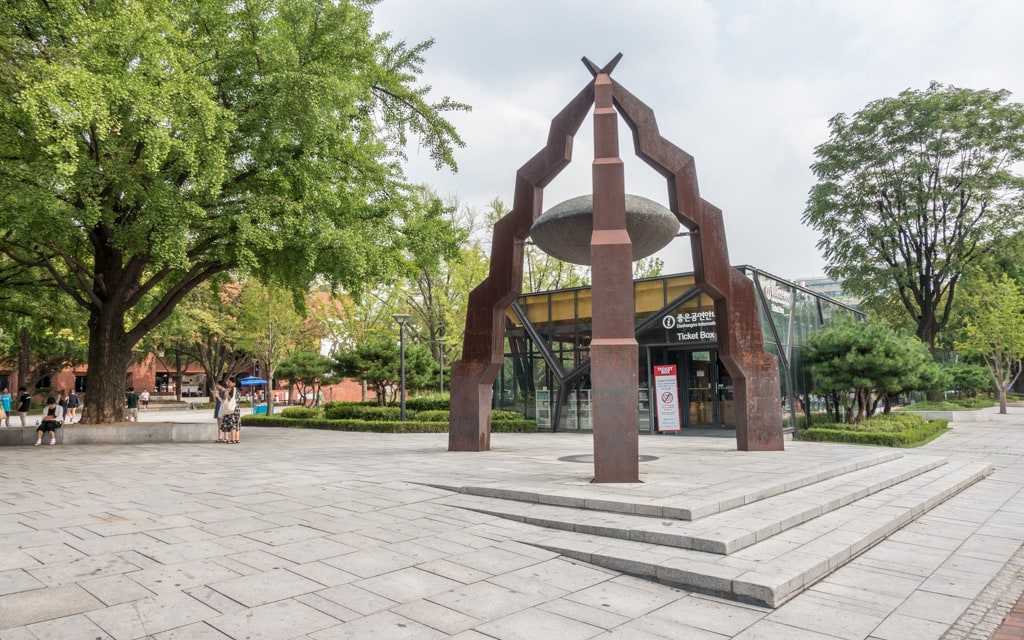
Marronnier Park is a park located in the Daehangno district of Seoul named after the large marronnier (chestnut tree) growing in the center of the park. The Marronnier tree originates from Italy and France in the Mediterranean where in the spring, red and white flowers can be seen blooming. The district of Daehangno, also known as College Street, is a popular place for cultural events, exhibitions, and musical performances.
Naksan Park
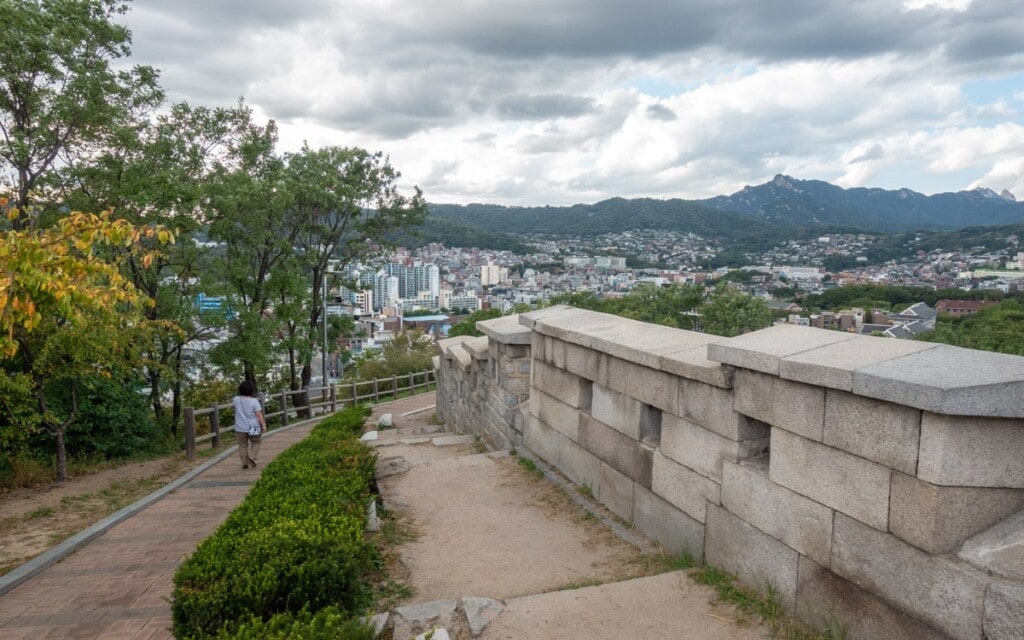
Stunning views of Seoul can be seen from Naksan Park, set high above Daehangno on Mt. Naksan. A portion of the old fortress wall runs through the park. Naksan Park is sometimes called Nakta Park. The name of the park is a reference to its hump like appearance as "nakta" is the Korean word for camel.
Seoul Munmyo
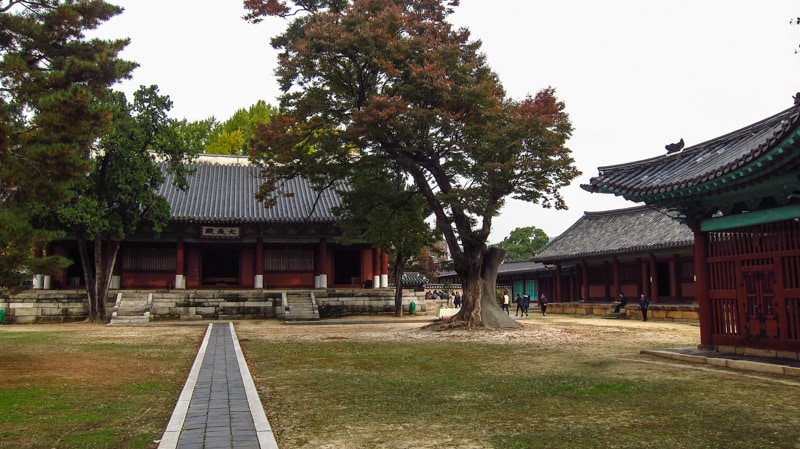
Seoul Munmyo is a shrine dedicated to Confucius, his disciples, and other great scholars. In the past, it has also gone by the name Munseonwangmyo. During the Joseon Dynasty, the buildings were used as an educational institution. Seoul Munmyo was first built in 1398 during the 7th year of the reign of King Taejo.
Lock Museum
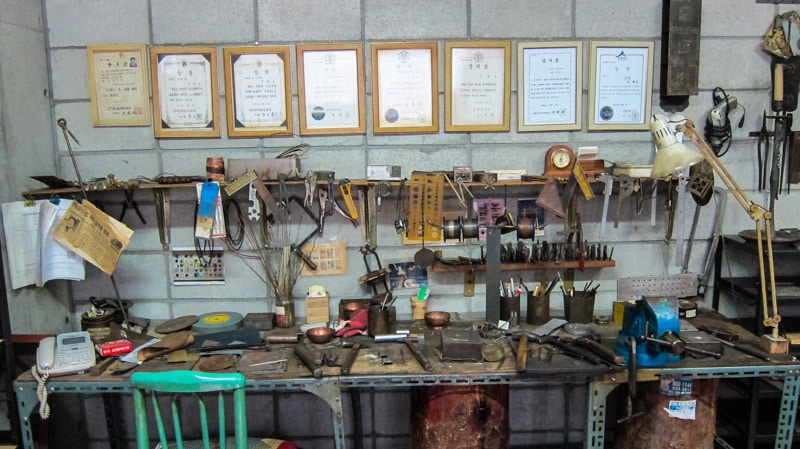
The Lock Museum displays antique locks, keys, and furniture from Korea and all over the world and conserves this disappearing art for future generations. The museum, which features over 4,000 different types of locks, is located in the district of Daehangno (College Street) near Daehak-ro southeast of Hyehwa Station. The museum was opened in a beautiful modern building in November 2003 by Choi Hong-gyu.
Last Updated on Mar 13, 2025